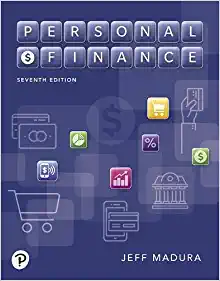Answered step by step
Verified Expert Solution
Question
1 Approved Answer
can anybody help me out with this certain problem set? Finance 320 Problem Set 1 Due: Sept. 9, 2016 Question 1 You are the financial
can anybody help me out with this certain problem set?
 Finance 320 Problem Set 1 Due: Sept. 9, 2016 Question 1 You are the financial manager of Costco Wholesale Corporation (symbol: COST) and are considering the purchase of a local grocery chain in the US northeast. COST will benefit by not only receiving the net cash flows generated by this company, but also via synergies produced by having the companies combine forces. You want to figure out the maximum you are willing to pay for this grocery chain. COST has determined that the hypothetical cash flows generated by this purchase would be of similar riskiness to its own total asset cash flows. Therefore, COST will use its asset expected return to discount the future net cash flows it expects to receive from this local grocery chain. Your challenge is to calculate COST's asset expected return, which will be used as the local grocery chain's discount rate (we will ignore any tax effects on the discount rate). a) First, calculate COST's equity beta. Go to Yahoo! Finance and click on \"Historical Data\" for COST. Click on \"Historical Prices\" and download monthly COST price data from August. 1, 2013 to August 1, 2016. Do the same for the S&P500 (symbol: ^GSPC), our underlying proxy for the market portfolio. Next, calculate monthly returns for COST and the S&P500 using the equation: = ( 1 )1 , where is the return in month t, and is the adjusted closing price in month t. When calculating returns, make sure your data are sorted so that time is in ascending order, not the default descending order. Convert all of your returns into excess returns ( ) by subtracting the monthly risk-free rate, which we will assume as 0.024/12. You will not have a return observation for the first month of your time series. Then, run a linear regression of COST excess returns (your Y variable) on S&P500 excess returns (your X variable). You can find \"Regression\" in Microsoft Excel in \"Data Analysis\" under the \"Data\" tab.1 If the X-variable coefficient is positive and statistically significant (t-statistic greater than 1.95), then we conclude (with 95% confidence) that if S&P500 returns are 1 percent higher, then COST returns are (Coefficient multiplied by 1 percent) higher. Report the X-variable coefficient along with its t-statistic. The X-variable coefficient is the equity beta for COST. This was derived by fitting data to the CAPM. 1 If \"Data Analysis\" does not appear, do the following: click \"File\
Finance 320 Problem Set 1 Due: Sept. 9, 2016 Question 1 You are the financial manager of Costco Wholesale Corporation (symbol: COST) and are considering the purchase of a local grocery chain in the US northeast. COST will benefit by not only receiving the net cash flows generated by this company, but also via synergies produced by having the companies combine forces. You want to figure out the maximum you are willing to pay for this grocery chain. COST has determined that the hypothetical cash flows generated by this purchase would be of similar riskiness to its own total asset cash flows. Therefore, COST will use its asset expected return to discount the future net cash flows it expects to receive from this local grocery chain. Your challenge is to calculate COST's asset expected return, which will be used as the local grocery chain's discount rate (we will ignore any tax effects on the discount rate). a) First, calculate COST's equity beta. Go to Yahoo! Finance and click on \"Historical Data\" for COST. Click on \"Historical Prices\" and download monthly COST price data from August. 1, 2013 to August 1, 2016. Do the same for the S&P500 (symbol: ^GSPC), our underlying proxy for the market portfolio. Next, calculate monthly returns for COST and the S&P500 using the equation: = ( 1 )1 , where is the return in month t, and is the adjusted closing price in month t. When calculating returns, make sure your data are sorted so that time is in ascending order, not the default descending order. Convert all of your returns into excess returns ( ) by subtracting the monthly risk-free rate, which we will assume as 0.024/12. You will not have a return observation for the first month of your time series. Then, run a linear regression of COST excess returns (your Y variable) on S&P500 excess returns (your X variable). You can find \"Regression\" in Microsoft Excel in \"Data Analysis\" under the \"Data\" tab.1 If the X-variable coefficient is positive and statistically significant (t-statistic greater than 1.95), then we conclude (with 95% confidence) that if S&P500 returns are 1 percent higher, then COST returns are (Coefficient multiplied by 1 percent) higher. Report the X-variable coefficient along with its t-statistic. The X-variable coefficient is the equity beta for COST. This was derived by fitting data to the CAPM. 1 If \"Data Analysis\" does not appear, do the following: click \"File\ Step by Step Solution
There are 3 Steps involved in it
Step: 1

Get Instant Access to Expert-Tailored Solutions
See step-by-step solutions with expert insights and AI powered tools for academic success
Step: 2

Step: 3

Ace Your Homework with AI
Get the answers you need in no time with our AI-driven, step-by-step assistance
Get Started


